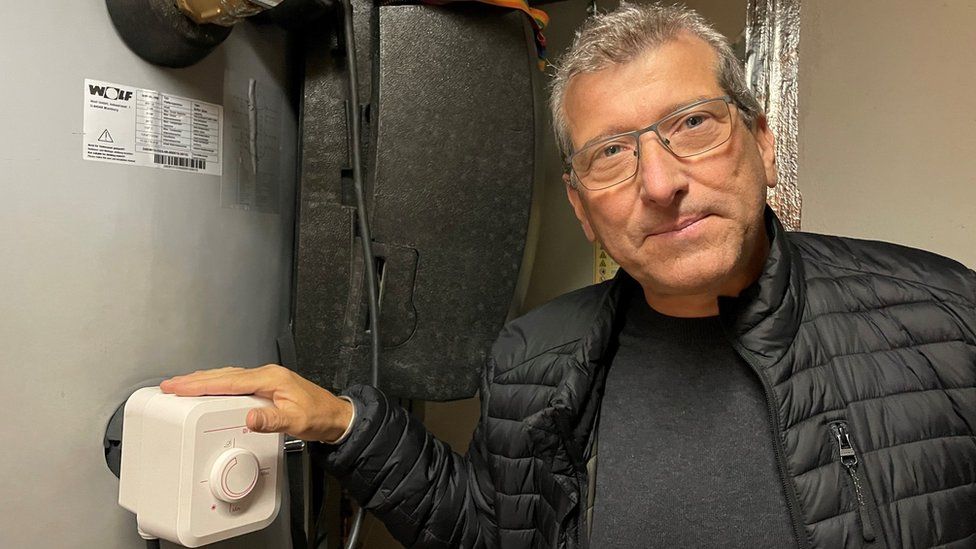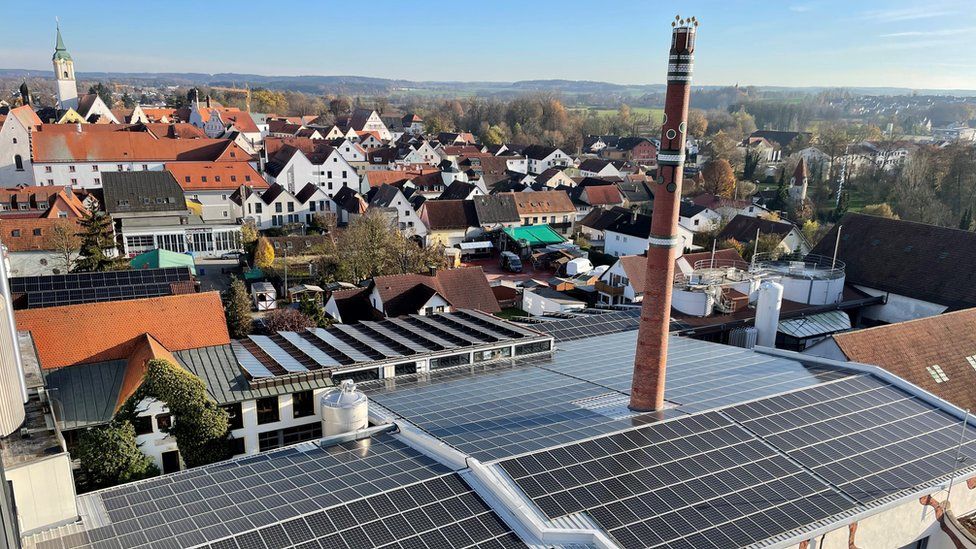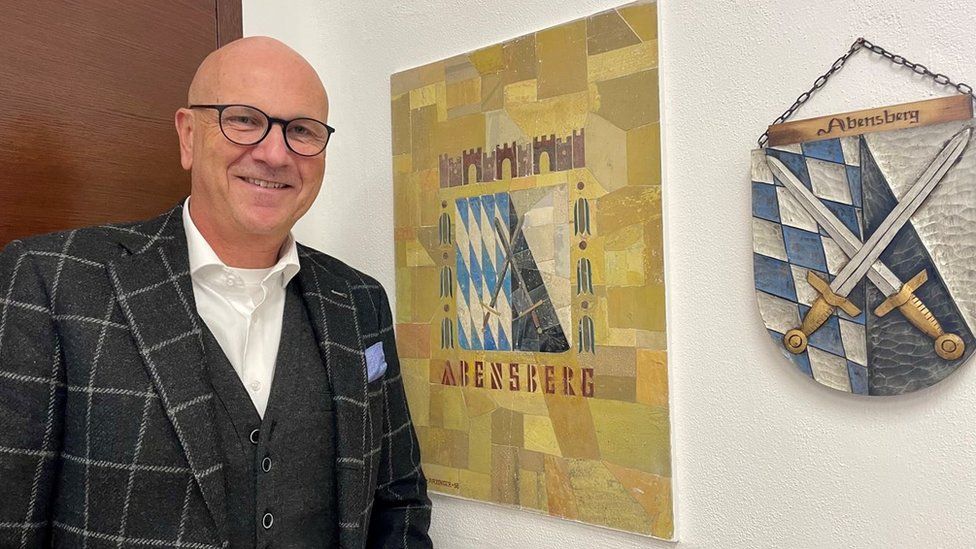
As Germany struggles with the energy crisis sparked by the Russian invasion of Ukraine, many communities there are looking with added urgency at ways to try to wean themselves off gas and oil. Abensberg in Bavaria is among a number of towns which have pioneered alternative energy solutions in recent years. The town of 15,000 people is focussing on solar power, and has ambitions to be self-sufficient in electricity by 2030.
Lothar Stich pointed enthusiastically at the streetlights along the bicycle path near his home. “They are all solar powered,” he said.
During the day, panels on the lamp posts absorb the rays of the sun, which get stored in a battery buried in the ground at the foot of the post. Lothar told me the lamps, which are activated by motion sensors, “are charged by day and used at night”.
Solar power is a big deal in Abensberg.
Lothar, an engineer who works in technical building services, has photovoltaic panels on the roof of his house, his shed and his garage, where he and his wife keep their electric cars. He said that over the year the panels produce more than twice the amount of energy he needs.
Lothar said the excess energy he produces gets sent to the local electricity grid.
“In the summertime from April to September, we don’t need any external electricity, we produce all our energy for ourselves. In the wintertime it’s not possible because of the lack of sun.”
He smiled. “It is a good feeling when you have your own electricity. You drive a car powered with your own solar electricity. The sun sends no bills. So it’s cheap, and it’s a good feeling.”

Abensberg’s town centre is deeply traditional with cobbled streets and a glockenspiel on the town hall. There is even a whiff of beer in the air from its breweries. But once you leave the old town, there are photovoltaic panels almost everywhere you look – on the kindergarten, on the school and scattered through the fields.
Even the roof of the Kuchlbauer brewery is covered with solar panels. Its managing director Jacob Horsch told me that the energy they supply has helped to offset inflation this year.
When I visited it was cold but sunny, and according to the energy monitor on the Abensberg webpage the town was at that time producing over 90% of the power it needed to function. However, as most of the energy comes from the sun, it has to supplement its supply from the grid when it is dark or cloudy.
The mayor, Uwe Brandl, told me that Abensberg’s municipal utilities had teamed up with a larger energy company to create the town’s own electricity provider.
He told me it brought together local solar and other renewable energy producers and consumers, and currently supplied 1,700 customers – at considerably cheaper prices than normal.
Mr Brandl wants the town to be self-sufficient by 2030.
“My goal is that by 2030, Abensberg will produce 300% of the electricity it needs, with photovoltaic systems, biomass, wind and water power.”

He said the energy crisis sparked by Russia’s invasion of Ukraine was focussing people’s minds on renewables.
“Alternative energy production has really gained momentum after gas became very expensive as a result of the conflict in Ukraine. And because of that many consumers are thinking about energy independence.”
Last year Germany got 55% of its gas from Russia, but in the summer that dropped to 35% and it is declining further.
German Chancellor Olaf Scholz has ordered the country’s three remaining nuclear power stations to keep operating until mid-April, as the energy crisis hurts the economy.
The crisis has also prompted it to restart mothballed coal-fired power stations, though the plan is to phase out coal in the drive for green energy.
Magdalena Groll-Zieglmeier, a town councillor from the Green party, said Abensberg still had a long way to go when it came to self-sufficiency in energy.
“It’s still only theoretical,” she said. “We only reach the target when the sun shines, and no storage [of solar energy] is possible at the moment.”

Magdalena and her husband, Richard, the town’s environment officer, recently added new photovoltaic panels to their house, and a new heating pump, which warms in the winter and cools in the summer. She said a lot of investment was needed to prepare houses for solar power.
“Our house is more than 30 years old, and it’s a matter of money to decide what to do. And the other problem is now that there are not many workers that can build heating or photovoltaic systems, and you have to wait for a long time.”
Richard said that for him it was about the future.
“This is very, very important for me. The region, Germany, Europe, the whole world… we must go this way. We must save our planet, for the children.”